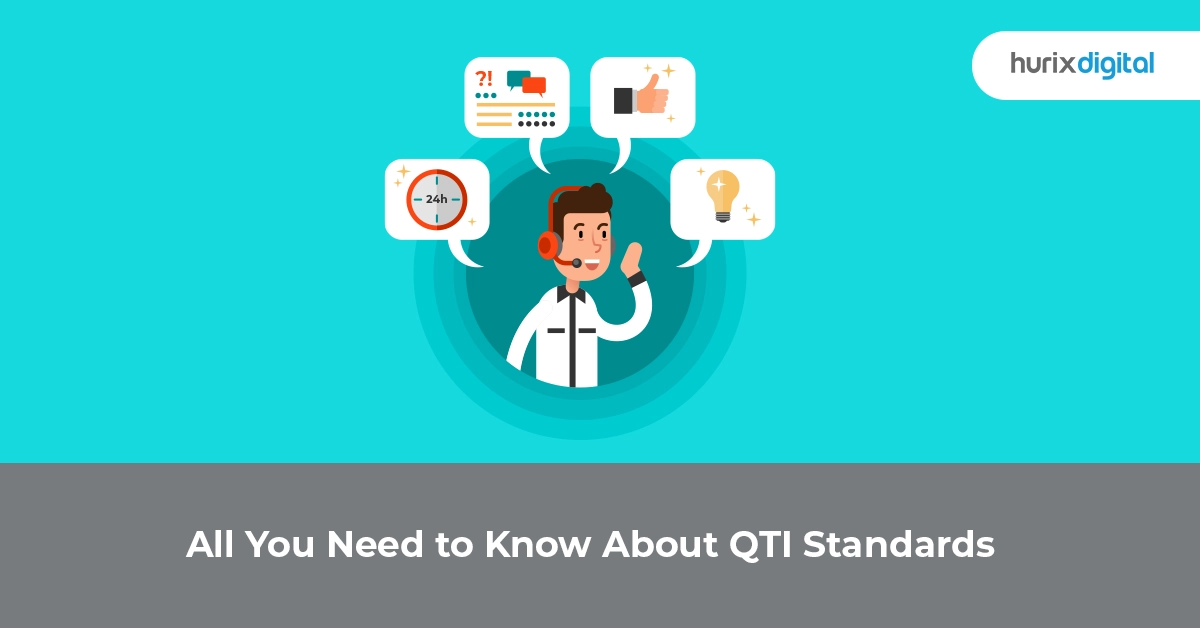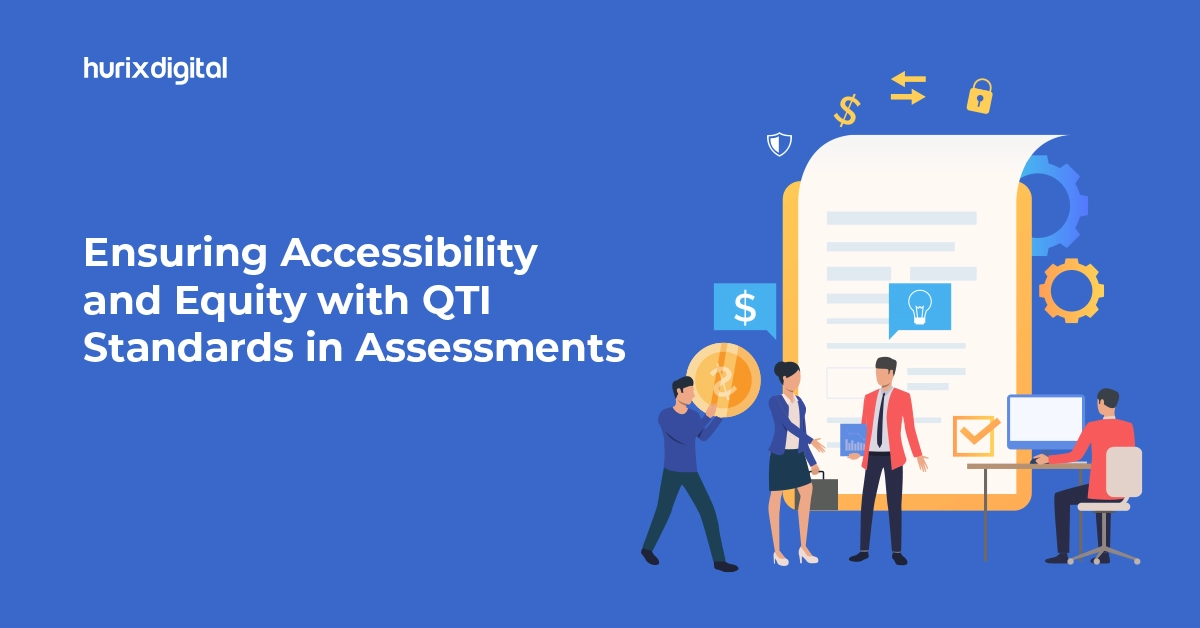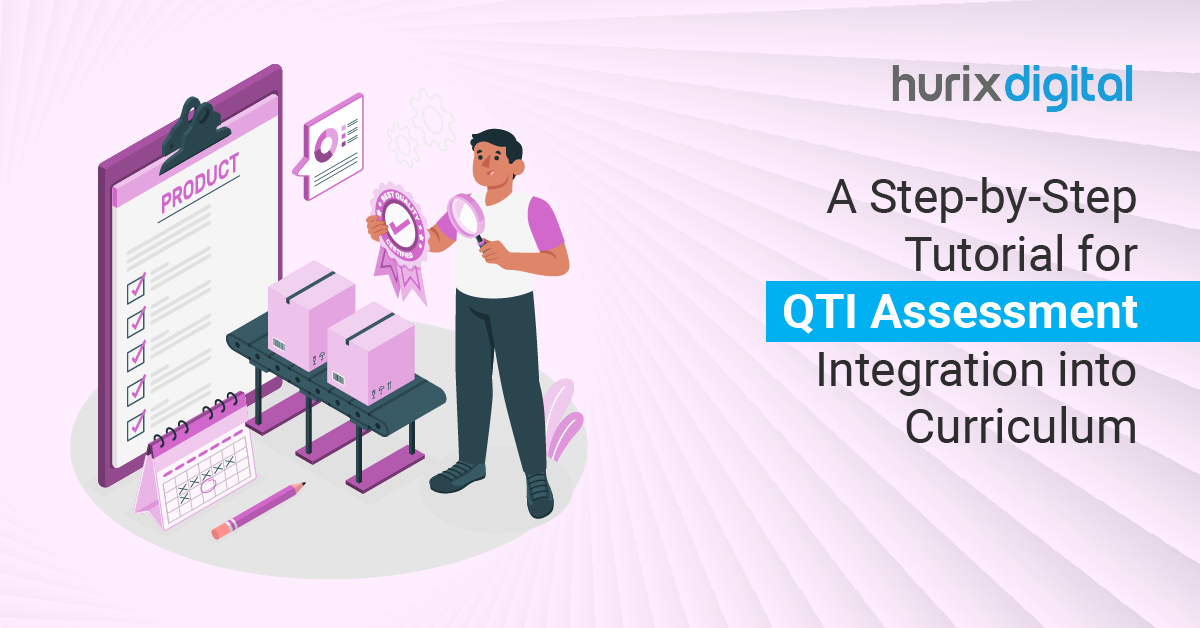
All You Need to Know About QTI Standards
Question and Test Interoperability (QTI) refers to a widely used standard or file format for test or exam questions. Primarily used in assessment and for similar educational purposes, this popular file format’s main advantage is that it allows for the easy transfer of test questions or content from one platform to another. Among these are e-learning, item banking, training questions, and more.
Put simply, the QTI standard or QTI file format defines a fixed format for the exchange of assessment data or content between different learning platforms. It allows you to leverage more than one vendor without much hassle, such as one for LMS and another for assessment delivery.
Likewise, QTI makes moving to a new system simple, as you can easily export all your data from the old one and move to the new vendor with relative ease. The data model also helps you dictate the structure of questions, tests, assessments, and results using XML data binding.
In this post, we will discuss more about QTI assessment or file format, along with its key features, applications, functions, and more.
Table of Contents:
- Key Features of QTI Assessments
- Importance of QTI File Format
- Functions of QTI Assessments
- Applications of QTI File Format
- Wrapping Up
Key Features of QTI Assessments
Here are the top key features of QTI assessments:
1. Packaging Format
The packaging format, referring to the QTI standard, refers to how assessment questions are packaged and shared across different platforms or learning management systems.
2. Data Model
The data model in QTI assessment questions defines the overall framework or structure of the assessment. This includes the test questions, answers, scoring rules, and more. Put simply, a data model works according to QTI standards as a blueprint for creating assessments.
3. Delivery and Scoring
The delivery and scoring rules in QTI standards control how assessments or test questions are delivered according to the set criteria based on which assessment scoring or calculations are made.
Further, the recent version of QTI 3.0 is designed to address the important areas of the earlier versions of QTI v2.1 and APIP 1.0. Among these are:
- Better cross-platform compatibility or interoperability and higher consistency or standardization of assessment content
- Easy access to shared vocabulary for standard or common display
- Higher support for HTML5 elements and other web-friendly markups
Also Read: The Rise of AI Question Generators: Revolutionizing Education and Training
Importance of QTI File Format
Here’s a snapshot of why the QTI file format is important:
1. Interoperability Across Platforms
QTI is an easy file format or standard that enables you to make test questions or assessments on one platform and seamlessly move them to another of your choice.
This kind of interoperability is quite important in today’s learning environment, especially where an increasing number of educational institutions leverage a combination of different systems, LMSs, exam assessment tools, and other similar apps.
2. Accessibility
QTI standard or file format is specifically made to support accessibility standards, thus making assessments much more accessible and inclusive for all learners. This includes learners with various disabilities as well.
By following the defined accessibility guidelines, publishers and other educational institutions can make assessments fair and ensure that they help to assess learner knowledge more effectively.
3. Standardization Across Data
Data standardization within QTI file formats helps ensure that the results of assessments or exams are consistent across and also easily interpretable.
Another benefit of standardizing data is that it facilitates an easier and more seamless exchange of data and allows you to gain deeper and better insights into learner performance across assessments.
Functions of QTI Assessments
Here are the functions of QTI assessments that make them a preferred choice for educational institutions and assessment providers:
1. Improve Assessment Ecosystem
QTI file format helps publishers and educators bring more sophistication and refinement to the overall assessment ecosystem. This is done by ensuring easy movement of question or assessment items, tests, and results content between different assessment authoring tools, item banks, learning management systems, and other scoring platforms.
2. Save Time, Money and Resources
Another advantage of the QTI file format is that it allows publishers to easily make digital assessments while also ensuring significant savings (money, time, and resources). The format allows publishers to create tests, quizzes, and assessments (formative or summative) with ease.
3. Capture and Exchange Individual Student Results
You can also use the QTI file format to exchange individual learner results of specific items or complete assessments across multiple contexts.
Applications of QTI File Format
Here are some of the common applications of the QTI file format:
1. Learning Management Systems
Most educational institutions leverage different learning management platforms. The QTI file format helps educators design exams or assessment questions in one learning management system and move them to another without much hassle. This ensures both consistency and continuity of the overall assessment process.
2. Assessment Testing Platforms
Another common application of QTI is in online assessment or exam testing platforms to make the transfer of assessments easier and faster. For instance, you can leverage the QTI file format for seamless assessment transfer between multiple learning management systems and for integrating third-party assessment tools as well.
3. Authoring Tools for Assessments
Lastly, you can also integrate the QTI file format into several assessment authoring tools, such as Dictera and more. This is an excellent way for educators to create test questions or assessments in a more standardized format.
4. Creating Assessments
QTI standard also allows educators to create or author assessments in a simple and standardized format that can be easily moved between different platforms. When making these assessments, users adhere to the specifications, thus ensuring compatibility and consistency.
Also Read: How to Create Engaging Assessments in 5 Steps?
Wrapping Up
QTI offers a structured and well-defined system for creating tests or assessments that allows you to share them across platforms, systems, and institutions.
The most recent version of QTI standards, QTI 3.0, offers a range of interesting features and applications to help improve the effectiveness of tests and make assessments more accessible for learners.
For educational publishers seeking powerful assessment creation tools that fully comply with QTI standards, Dictera offers the ideal solution.
Dictera, powered by AI and ML and presented by Hurix Digital, enables educators and trainers to effortlessly create comprehensive assessments, collaborate in real time, and gain data-driven insights into learner performance.
Connect with us today to learn more about Dictera!







